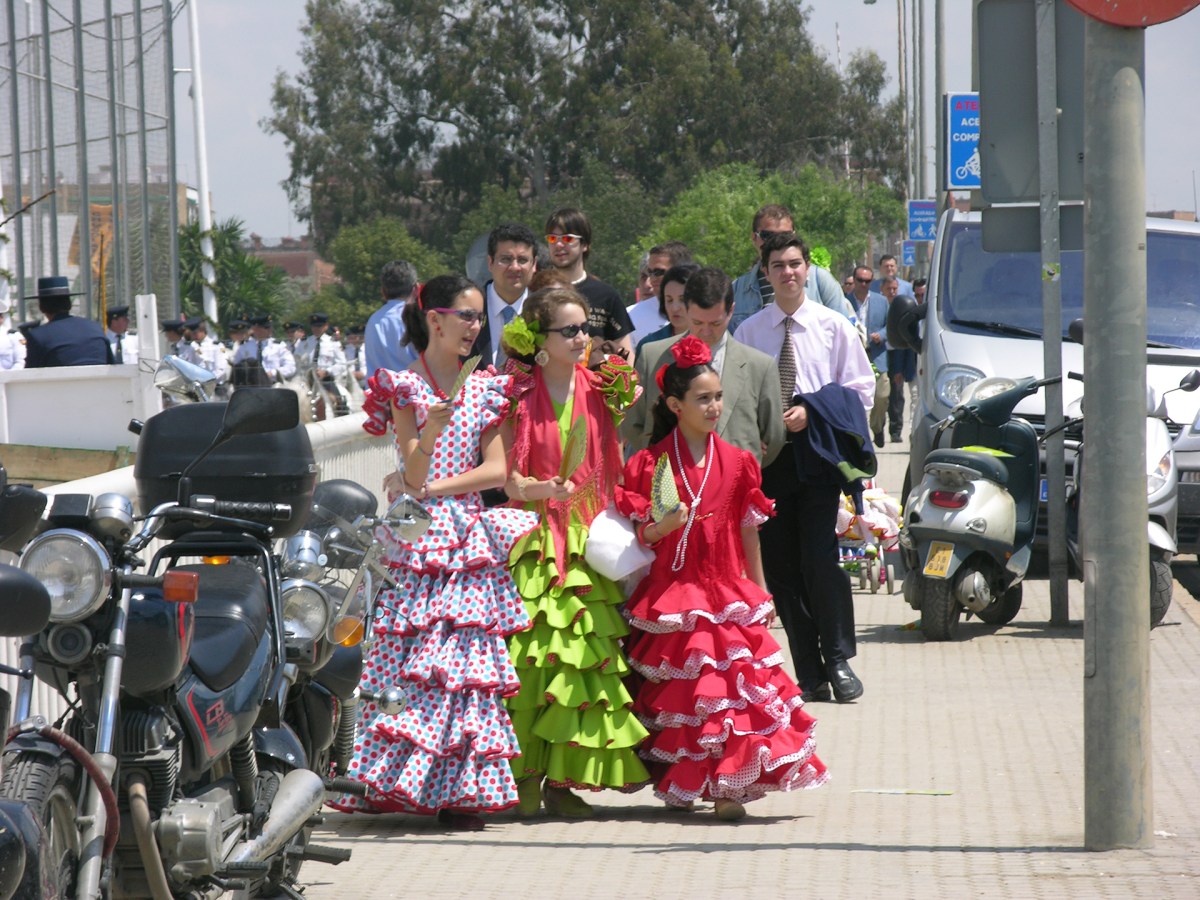Enjoying Spain’s Diversity


For our first trip to Spain, we settled ourselves into a tiny town, Cazalla de la Sierra, in the heart of the national park area called Sierra Norte. We had chosen a newly built “hacienda-like” inn, Vega De Cazalla, with a central courtyard, just as one would want in their warmer climate. What we didn’t know was it was on a new road that hadn’t yet received a road sign. The good thing about that unmarked road was the circuitous route we had taken to find it, a route we immediately headed for the next day, exploring sunny, flower-strewn meadows filled with grazing sheep and a beautiful and friendly galloping horse.
Every time we ventured out from our little hacienda, we headed for that road, discovering some new picturesque treat each time. We’d park the car and just wander along the quiet road, enjoying the variety of country scenes we found. Or we headed into town, where we had several very pleasant meals at a little restaurant on the square. For breakfasts, we enjoyed the generous array offered at our inn. (Vega De Cazalla was a very reasonable B&B, and even today a room can be rented for only $218 for a three-night stay, up only a slight amount from the $68 we paid per night.)
On this trip we ventured forth from Sierra Norte, to Granada (The Independent, August 14, 2018), Cordoba, Seville and points in between before heading back to Madrid for the trip home. We did a lot of driving, on wide roads that skirted immense orchards of cork oaks, and on tiny, twisting hillside roads. But our most amazing foray was to Seville. Seville was celebrating Feria de abril de Sevilla, a weeklong fair/festival that was unlike any “fair” we’d ever been to before.
Feria began not as a festival, but actually as a livestock market. Back in the 1800s, people came to Seville to sell cattle and other animals in the spring. Over many years, the market took on a more festive feel, and it eventually expanded from just a couple of days to a wildly colorful six days of celebrations. Today, you don’t find cattle for sale at the Feria — instead, you are treated to an array of horses, carriages, brightly colored casetas (tents), and traditional clothing worn by just about everyone. This means bright, colorful flamenco dresses for the ladies, and the traje corto, or short suit with wide-brimmed hat for the men. And the ladies don’t stop with just colorful dresses — shoes, purses, mantillas, and, usually, a flower in the hair — all are completely coordinated. Much to our delight, this even applied to babies in carriages and strollers. It was like being surrounded by a walking rainbow.
One of the most elegant displays we saw comprised a group of gauchos, six young women and two men, who were crossing the street coming toward us. I aimed my camera at them, and they stopped and posed for me — looking like a photo shoot for some high-fashion magazine — then cheerfully went on their way. One of the most entertaining was the young lady, in full regalia, riding side-saddle on the back of a motorbike.
We don’t have a real parallel to Feria — it’s far more than a fair — it’s a gathering of clans for dining, drinking, dancing, and delight. Interested? The Feria de Abril starts on a Monday evening roughly two weeks after Easter. The dates vary by year since Easter doesn’t fall on the same date all the time, but it’s usually in mid/late April or early May. In 2019, the dates will be May 6 to 12. The fair officially begins at midnight on Monday, and runs six days, ending on the following Sunday. It happens at the Real de la Feria, which is in Los Remedios to the southwest of city center, next to the river, about a 30-minute walk from the Seville Cathedral. Don’t know the way? Just follow the ladies in their brightly hued, wildly ruffled dresses! Look for the public tents or hire a friendly guide when you arrive.
Visit our website at olddogsnewtrips.com, and we welcome your comments on our Facebook page—Old Dogs, New Trips.
olddogsnewtrips@gmail.com





















